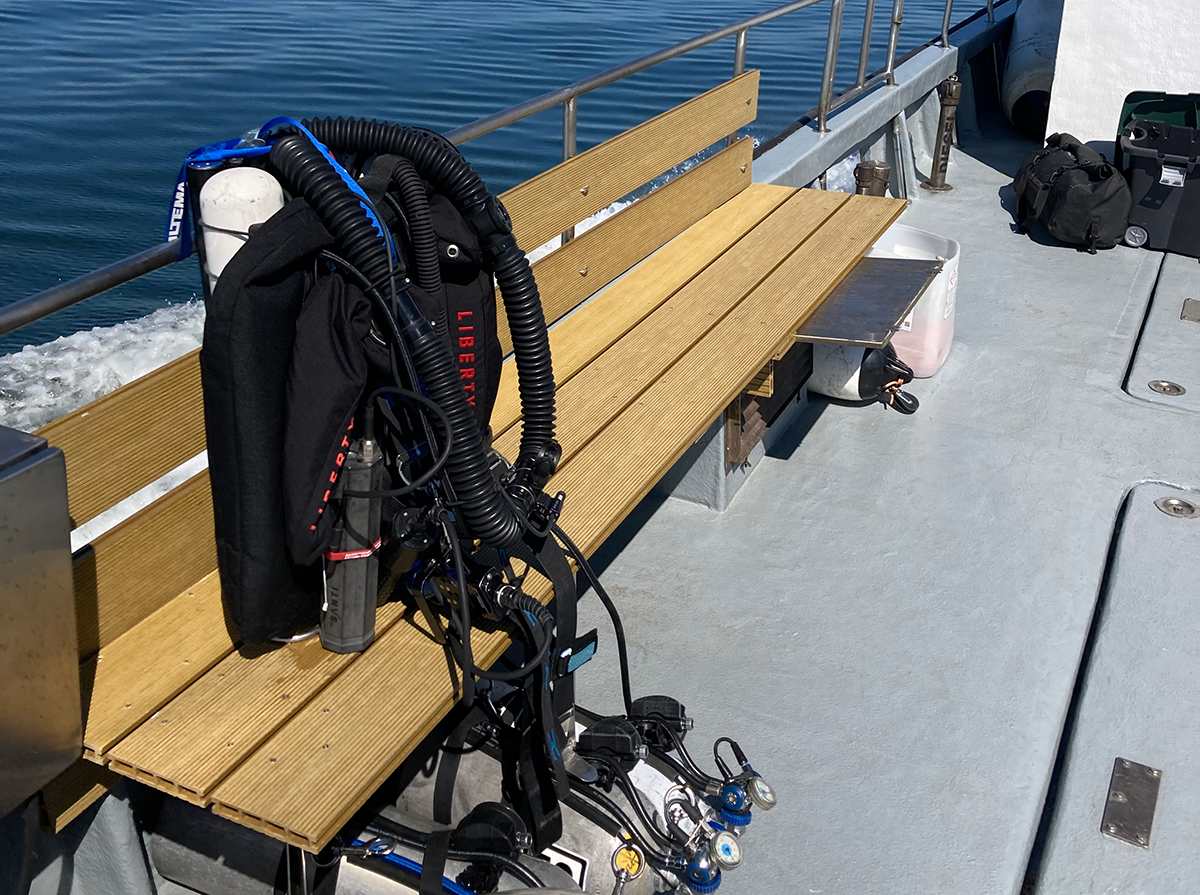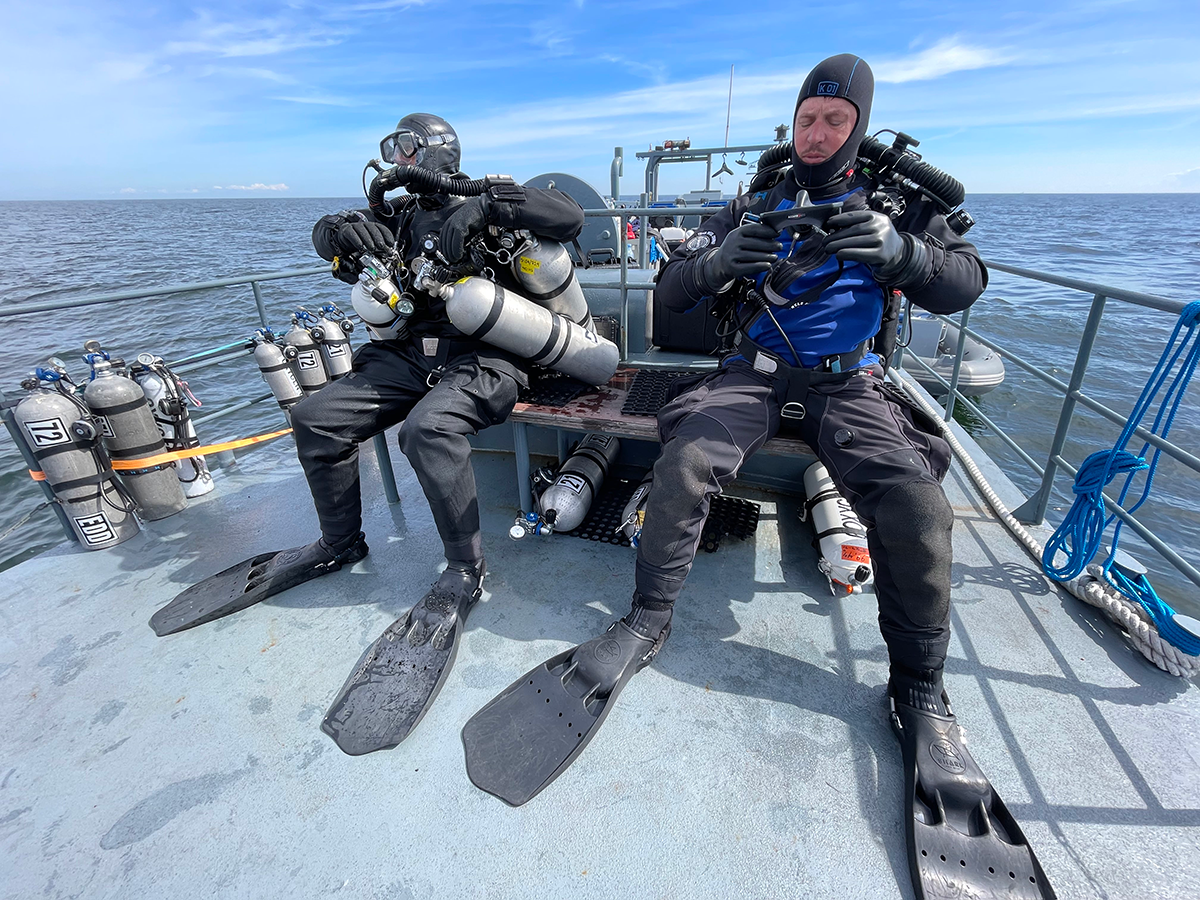Rebreathers Role in Underwater Science

Carrying out science underwater has in recent times become commonly discussed in both the diving community and general media with agencies offering training and citizen science projects becoming developed. But what is the main difference in scientific diving from the general recreational world?
Actual scientific diving as an occupation varies both in needs and training with the defined goal of diving to gather data, be that samples, observations or experimental manipulation carried out by professional scientists or research teams. Citizen science projects on the other hand are volunteers from the general community that wish to contribute their skills and expertise, in this case in diving, to assist in data gathering under a structured project where extra assistance is required. Both are important, though different, with the latter adding valuable contributions to researchers understanding of the underwater world.
Benefits of the use of CCRs for underwater research
The next question is how can the use of CCRs benefit underwater research and why? The obvious first thought is to get deeper for work with reduced gas costs and reduced risk accosted with deeper range open circuit, but that is just one component. The overall benefits from the fundamental nature CCR can develop huge advantages in shallow research in all fields.
The extension of gas use means long periods gathering data can be spent on a dive where classic open circuit gas supplies, rather than decompression, would be limiting factor. Remote areas where only a smaller compressor is present but oxygen can be sourced the filling times on the surface can also be addressed in this manner.

A big advantage of CCR is the extension of depth ranges and bottom times for the ranges 30- 40m, where current recommendations on gas density suggest helium usage and decompression windows require even larger columns of gas. The fixed setpoint of a CCR means these ranges can be accessed using minimal gasses but also allow multiple levels to be completed moving shallower to gather further data while off gassing there, for example carrying out benthic biodiversity transects or fish surveys (Andradi-Brown et al, 2016).
One great advantage in marine biological work is the reduced impact that a silent diver on CCR has to the surrounding life and potential study subjects behaviour, shown by work on fish surveys comparing CCR and open circuit ( Linfield et al, 2014).
And the disadvantages
Now the advantages have been briefly covered, what about the disadvantages? The main one is time and experience diving it requires to be able to dive a CCR well enough to manage extra task loading that all scientific diving will add. This factor alone already limits the option for many professional scientists that do not have the place in their workload to train or regularly dive on a CCR.
The idea that 'training a scientist to dive is easier than training a diver to do science' differs when moving across to rebreathers and the skills of experienced teams can be harnessed to collect the relevant data if they have an understanding of the scientific questions being asked under the direction of the actual researcher.

Challenges still exist in this approach as well due to many countries having defined regulations on how diving operations in research are carried out with extra considerations to safety and risk mitigation that are not common within the sport diving community. This applies closed circuit rebreathers in the application as well and in fact some countries that have stricter regulatory standards even do not allow CCRs to be used in occupational application, much to the determent of science in those areas.
Training for CCR Scientific Diving
Development in training and technology though is occurring to address the regulatory challenges and educate CCR divers in approaches that allow them to carry out occupational diving activities.

Such examples are in the USA, with the American Academy of Underwater Science, with their standards allowing for CCR use with correct procedures. On the European side there is the Finnish Scientific Diving Academy, based at the University of Helsinki, which is running European Scientific Diver level programs but aimed at training operation specifically for CCR scientific work, predominately in colder waters with the risk and safety management, procedural development, task loading and other components that are part of occupational scientific diving.
These are not the only organisations offering training or opportunities and this area will grow as the benefits of CCR application in research grow.
- Edd Stockdale - Gradient Technical Diving
Follow Edd on Facebook and Instagram to learn more!
Finnish Scientific Diving Academy
Articles related:
- https://gue.com/blog/finlands-newly-established-scientific-diving-academy/
- https://gue.com/blog/the-swan-a-17th-century-story-at-the-bottom-of-the-baltic-sea/
- https://owusseurope.org/scientific-diving-in-tvarminne-finland/
References:
Andradi-Brown, D., East, A., Shepherd, LM., Stockdale, EJ., Rogers, AD., 2016 Challenges and opportunities in conducting mesophotic reef research. Reef Encounter 31 (1), 26-31
Lindfield, S.J., Harvey, E.S., McIlwain, J.L., Halford, A.R., 2014. Silent fish surveys: bubble-free diving highlights inaccuracies associated with SCUBA-based surveys in heavily fished areas. Methods Ecol. Evol./British Ecological Society 5 (10), 1061–1069
Divesoft.app
Plan your decompression, gasses, utilize checklists, check your logs + more!!
All for Free.
